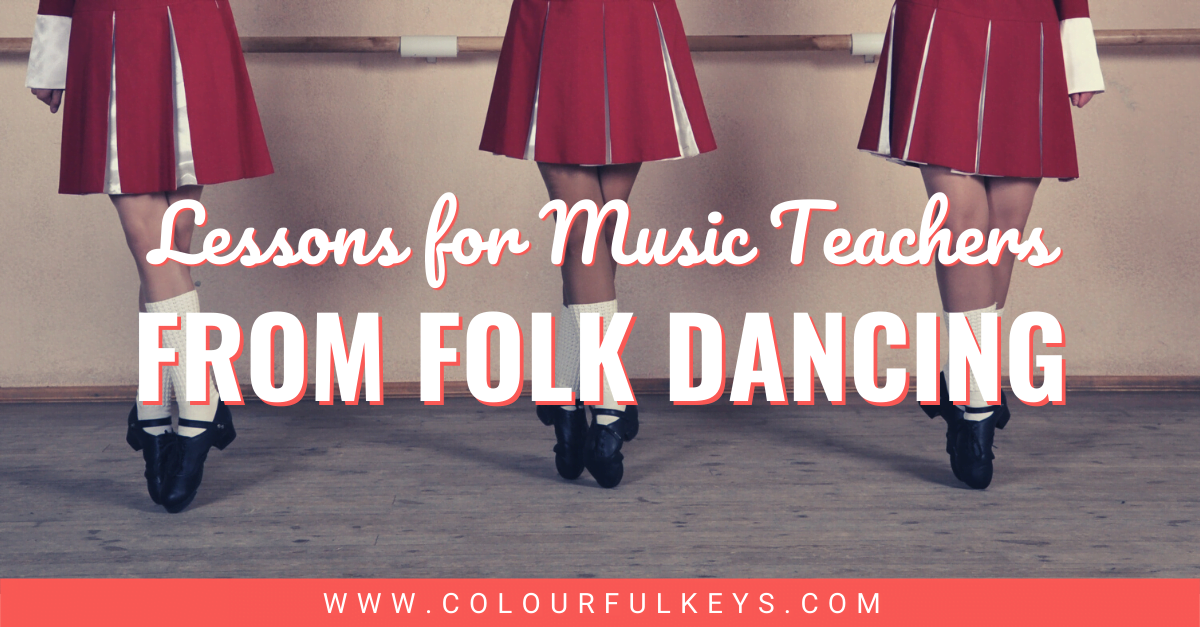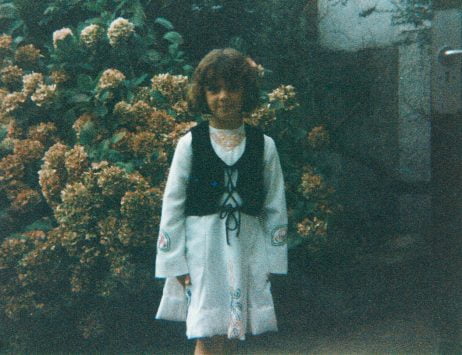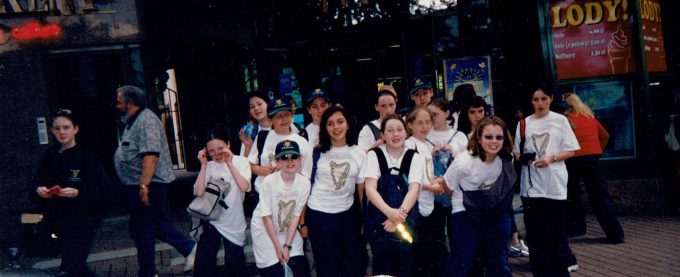Teachers can find lessons everywhere if they look carefully enough. In this article, I want to share with you the lessons I learnt from my years of folk dancing which show up today in my music studio.

⬆️ Listen to the podcast above or keep on reading, whichever fits your style. ↙️
I was that student growing up. You know, the one who you complain to other teachers about because they’re too over-scheduled to practise?
Yeah, that one.
The thing was, I wasn’t actually over-scheduled. My parents weren’t the driving force behind my busy timetable. It was me.
I wouldn’t quit anything.
One of the many things I wouldn’t quit was Irish dancing. (Before you ask…yeah, sure, kinda like Riverdance.)

I could’ve been a better pianist if I focussed entirely on piano. However, I believe it’s the experiences outside of music which made me the teacher I am today.
As you read through my lessons from folk dancing, I hope you’ll take some of them with you. But, more than that, I hope you’ll investigate some of your own experiences and think about how they’ve affected the teacher you’ve become.
Culture
Those of you who are familiar with Irish dancing competitions have the wrong image in your head right now.
I didn’t wear a wig or a neon dress or put on fake tan. (No offence to anyone who did that!)
These socks and shoes, though, are entirely accurate. And I do still stand like this when I’m not thinking.
My teacher believed in a more traditional and understated approach to attire. More importantly, she also valued Irish dancing as part of our culture rather than a place to win medals.
We went on cultural exchanges to other European countries where we stayed with families of a local dancing group. We would spend the days touring and performing with them, and then often have social gatherings in the evening where we literally exchanged dances.
We would teach them our dances and they would teach us theirs. (And laugh at us for not being able to waltz…every other country’s traditional dancing includes waltzing, so we were the odd ones out there.)
This taught me so much about other cultures and about communicating without words. Many of our host families wouldn’t have much English, but we still became friends and navigated the timetables together.
It’s this appreciation for other cultures and world views which I have carried into my teaching.
This makes me curious about all types of music my students might want to learn. It also helps me to understand them no matter what background or personality they arrive with.
Community
I didn’t do team sports growing up, and I didn’t have much opportunity for shared music making either. Dancing was my window into what “community” could be.

Community is something I strive to bring to my music studio more and more each year. Piano doesn’t have to be their only thing, but I do want it to be part of their identity. And I think connection with other students is one of the best ways to develop that.
I’m always looking for new ways to bring students together like buddy lessons, group workshops and collaborative projects. We might not be training to perform on stage in perfect unison, but that doesn’t mean we can’t lend each other support and camaraderie.
Performance
I didn’t perform in piano recitals until I was around 14 or 15. So my first performance experiences were in dancing rather than music.
When I did start to play in piano concerts, I was so focussed on getting it right that I didn’t really perform. I wasn’t thinking about the audience’s experience; I was just trying to get through it.
Dancing was a bit different. I was still nervous and I wanted to do well, but I had a better understanding that what I did on stage would affect how much the audience enjoyed it.

Seems like a simple concept, but for me it didn’t translate to piano for some time.
I try to make that connection happen sooner for my students. I think it makes playing for others so much more relaxing and fun when we focus on their experience instead of our correctness.
Our centralised hub page for your Studio Business has an entire section devoted to recitals and other performances. Check it out!
Repetition
Both piano pieces and dance steps take practice. We have to repeat things until they become second-nature so we can add new layers on top.
What I gained from repeating dances on stage was the understanding that it would be different each time. Sometimes better, sometimes worse, and sometimes just different.
I also understood, through dancing, that steps could get rusty. If you don’t do even the simplest of sequences for a few months or years, you will not remember them. You’ll have to start again.
It’s the same with pieces, but less instinctive. I always felt that if I was able to play a piece before then I should be able to do it now…but we have to practise to maintain a level of polish. It doesn’t stay the way we left it.
Rhythm
Lastly, dancing is where I learnt and reinforced many rhythmic concepts.
When asked the time signature of a piece I listened to, I would check which dance I could do with it. Did it match a jig or a reel?
But beyond that, I believe dancing teaches you how vital rhythm and beat are. If a musician plays with poor rhythm, you will not be able to dance to their music. If they play some wrong notes, you probably won’t even notice!
Rhythm is everything in music. Try teaching your students a few dance steps and see the impact it has on their playing.
Your One Thing.
Take a look at your own hobbies (past and present) and ask yourself what they taught you as a teacher. Dig deep and write some of your favourite lessons in a journal or on your bedroom mirror.
What hobbies did you have growing up?
In the comments below, tell us what you learnt from experiences outside of music. 🙂

Hi Nicola, just a note that my partner had the same experiences with folk dance in Bulgaria growing up. Folk dancing was a really formative part of his childhood that he still talks about to this day, and his dancing led to a life of cultural exchange, sharing and open-mindedness. As to rhythm, well, he didn’t become a musician but is an amazing athlete.
I love the idea of the spirit in collaboration and sharing, and think we can learn a lot about the value we can give our students by adding this to our studios 🙂
Hi Joanna,
Many thanks for this informative and fascinating information, its really appreciated!